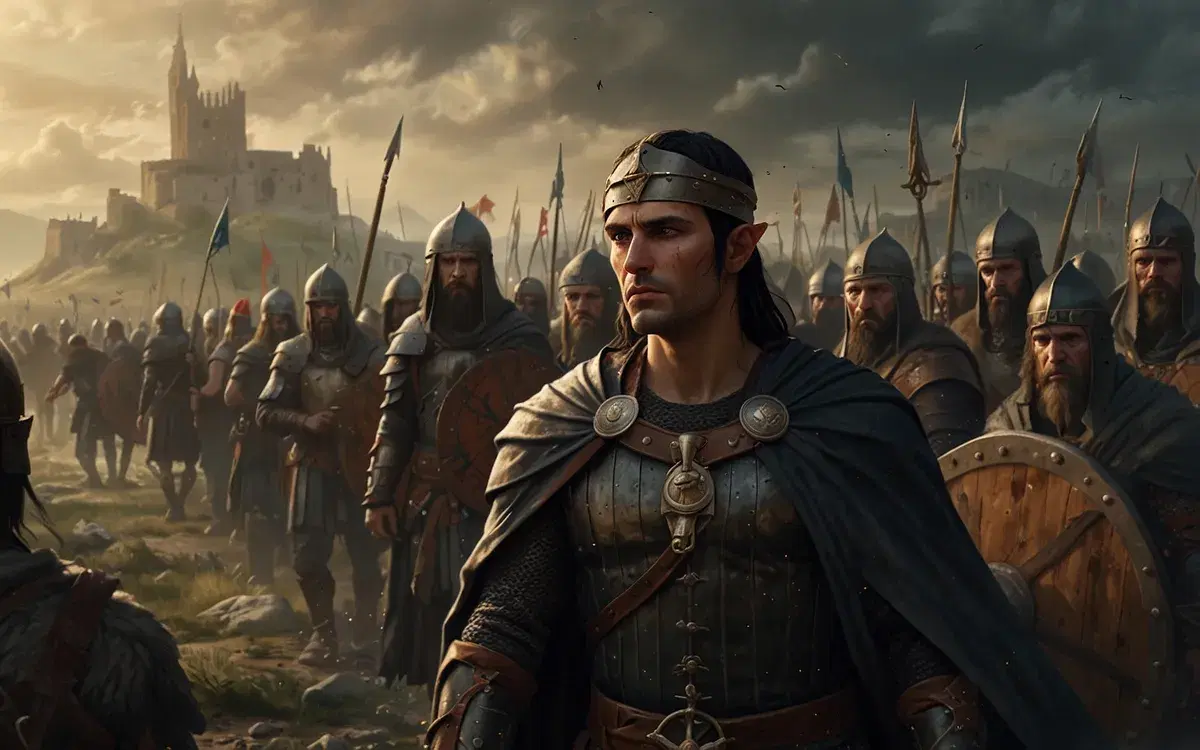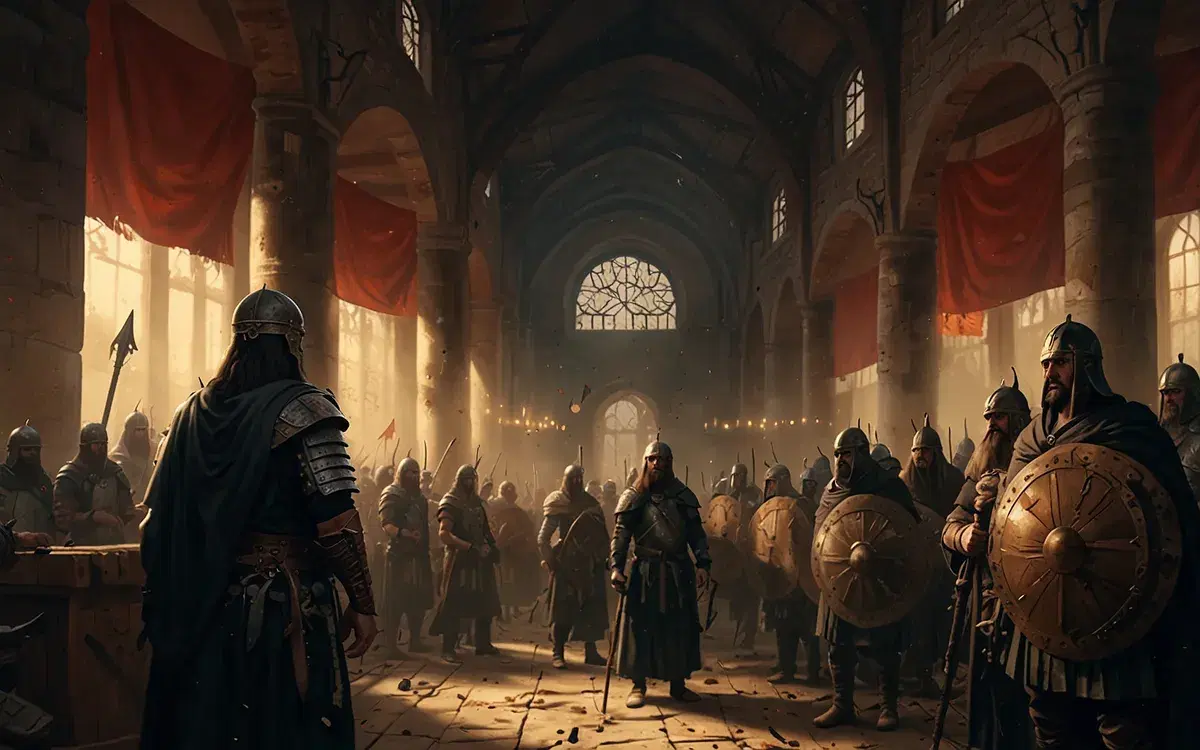West Goths in Europe: The Migrations and Kingdom of the Visigoths
The story of the West Goths, often referred to as the Visigoths, is one of epic migrations, battles, and the eventual creation of a lasting legacy in the lands they traversed. Over centuries, they carved a path through Greece, Italy, Gaul, and finally into the Iberian Peninsula, where they established a kingdom that endured for nearly three centuries. This saga, led by their indomitable king Alaric, is a testament to resilience, ambition, and the complexities of early medieval Europe.
Journey into the Empire
Initially, the Goths ventured only a short distance into the Roman Empire’s territories. However, their ambitions soon grew, beginning a series of movements that would leave an indelible mark on history. Their leader, Alaric, recognized the futility of attacking the heavily fortified city of Constantinople and wisely redirected his people southward. This strategic decision set the stage for the Goths to traverse lands steeped in history, from the storied plains of Macedonia to the sacred grounds of Thermopylae, where Greek heroes had once stood firm against overwhelming odds. Unlike those ancient defenders, the inhabitants of these lands, weakened and unprepared, offered little resistance to the advancing Goths.
Athens, adorned with its magnificent marble edifices and artistic treasures, capitulated without a fight. The city was forced to pay a hefty ransom, leaving its people impoverished and its spirit shattered. Alaric’s forces continued their march, plundering and razing towns and villages across southern Greece. Precious artifacts, livestock, and the lives of countless inhabitants became spoils of war as the Goths cemented their presence in the region.
Alaric and Stilicho: A Clash of Titans
At this time, the Roman Empire boasted only one general capable of matching Alaric’s cunning and resolve: Stilicho, a man of barbarian descent who had risen to prominence in the Empire’s military. Stilicho’s initial campaigns against the Goths forced them into the rugged valleys of southern Greece. Yet, through Alaric’s resourcefulness, the Goths escaped their confinement, outmaneuvering their Roman adversaries. To placate the Goths and avert further conflict, the Eastern Roman Emperor granted Alaric control over a province on the Adriatic coast, hoping this would quell the Gothic threat. Instead, it allowed Alaric to regroup, stockpile resources, and prepare for his next bold endeavor.

Clash of Titans
March on Italy
With his preparations complete, Alaric led the entire Gothic nation, including women, children, and their accumulated wealth, toward the fertile lands of Italy. The Gothic king aimed to seize Rome, the heart of the ancient world. However, his ambitions were thwarted by Stilicho, who once again mustered a formidable defense. The Goths faced relentless pressure from Roman forces reinforced by troops from Gaul, the Rhine provinces, and Britain. Although Alaric’s fiery determination galvanized his people, repeated setbacks, including a devastating defeat during Easter celebrations, forced the Goths to retreat.
Despite this setback, Alaric’s resolve remained unbroken. He bided his time, consolidating his forces while the Roman Empire’s internal politics unraveled. The Western Emperor, mistrustful and inept, alienated key allies, including Stilicho, whom he ultimately executed. This short-sighted act removed the Empire’s most capable defender, leaving Italy vulnerable to renewed Gothic incursions.
Sack of Rome
In 410 AD, Alaric led his forces to Rome for the third and final time. The city, once an unassailable bastion of power, now crumbled under the weight of internal decay and external pressure. For six harrowing days, the Goths looted the Eternal City, seizing its treasures and enslaving its people. To the Romans, it was a cataclysm of unimaginable proportions, marking the first time in eight centuries that a foreign enemy breached their gates.
From Rome, the Goths moved southward, pillaging towns and preparing to cross into Sicily. However, their plans were abruptly halted by Alaric’s sudden illness and untimely death. His followers, determined to honor their fallen leader, buried him in secret. Diverting the flow of a river, they laid Alaric to rest in its dry bed, alongside his warhorse and finest armor. Once the burial was complete, the river was returned to its course, and the captives who performed the task were executed to ensure the grave’s location remained hidden for eternity.

Sack of Rome
Legacy of the West Goths
With Alaric’s death, the Gothic tide receded. Their new leader, a pragmatic and moderate figure, sought to stabilize relations with the Roman Empire. Recognizing that his people lacked the administrative experience to govern Rome, he proposed a compromise. The Goths would move into Gaul and Spain, driving out other barbarian invaders and ruling these territories in the Emperor’s name. This arrangement laid the foundation for a Gothic kingdom in the Iberian Peninsula, which flourished for centuries.
The West Gothic Kingdom became a beacon of relative stability amidst the chaos of the collapsing Roman world. Yet, their dominion eventually fell to a new wave of invaders: the Moors from Africa and additional northern tribes. Despite their ultimate decline, the legacy of the West Goths endures as a pivotal chapter in the story of medieval Europe, illustrating the dynamic interplay between conquest, cultural assimilation, and the enduring quest for power.
Reflections on a Transformative Era
The saga of the West Goths highlights the vulnerabilities of even the mightiest empires and the indomitable spirit of those seeking a place to call their own. It is a story of ambition tempered by adversity, of destruction giving way to renewal. As we look back on their wanderings, we are reminded of the profound impact these migrations had on shaping the contours of European history. From the ashes of Rome to the foundations of a new kingdom, the West Goths’ journey remains a poignant testament to the ever-changing tides of civilization.





.webp_1747676619394)